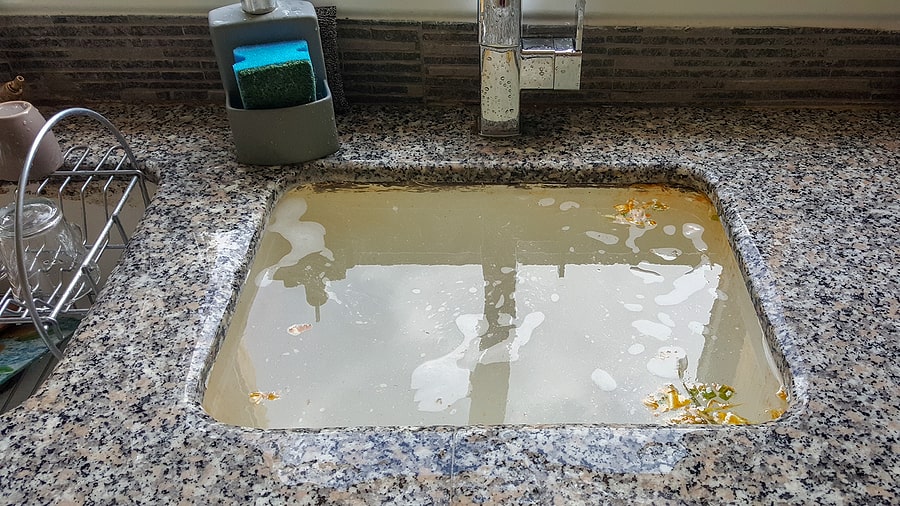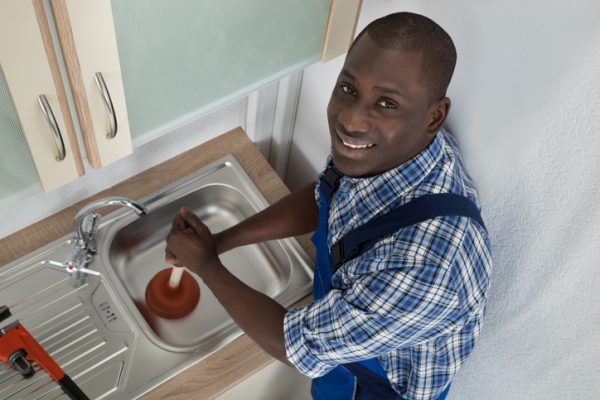What are your beliefs about Some Ways You Can Prevent Kitchen Sink Clogs?

One more pointer somebody else had actually offered me that I forgot to ask the plumber about is to take a container of salt every month as well as flush it down your toilet. They told me it would certainly keep tree origins from expanding toward your pipelines. So since I have trees in my backyard I salt the toilet as soon as a month also.
Someday last week my cooking area sink got clogged, while annoying I really did not think it was going to be a big deal.
I just got the Fluid Plumber I had bought for simply such an occasion, and after that presto. Absolutely nothing.
So we avoid to Wal-Mart, my little girl in her jammies since she was just about to go to bed. I found the Draino, my daughter suggested to obtain two just in case as well as after the Liquid Plumber had not functioned I though possibly I much better.
Tried it and it really did not function, so after that I decided to let it really have a long time to persuade night. Still in the morning a clog.
So I call a plumber and he had actually the obstruction repaired in no time at all, and also he gave me a little bit of recommendations that I am mosting likely to be making use of now.
He told me once a week to fill out both my sinks and then let the water out on both at the same time. He said the cyclonic action of the water would continue all the way through my pipelines and also maintain me from having an obstruction.
He claimed as long as you do not place a great deal of oil down your drainpipe you must never ever have a blockage.
So I believed I would share this pointer with every one of you. I figure it does not set you back anything and also takes less than 5 mins so why not.
Kitchen sink not draining? Here are 6 ways to unclog it
Attack with boiling water
When hair, grease, soap residue and other debris get stuck in your drain, boiling water may be all your pipes needs to loosen the blockage. It's the simplest fix, which means it should be your first move when trying to unclog a sink.
Bring half a gallon of water to a boil on your stove or use a kettle to heat the water. Pour the boiling water directly into the drain opening. Turn on the faucet to see if the water drains in a steady fashion. If it's still draining slowly or standing still in the sink, repeat the process. Important note: Don't try this method if your drain is attached to PVC pipes, as the boiling water could melt or damage the plastic.
If the boiling water fails to dislodge the clog after the second try, it's time to move on to another method. Unfortunately, you have yourself a sink clog that's too stubborn for the simple boiling water approach.
Check the garbage disposal
If your sink has a garbage disposal, it could be the culprit of your drainage issues. If the clog is in the disposal, turning it on will usually break up the blockage. Overheated or dysfunctional disposals may not even turn on, but you can activate the reset switch at the side or bottom of the unit for an easy reboot. After resetting the disposal, try turning it on again to clear the clog.
If you turn on the disposal and hear a low humming sound, the unit could be jammed or broken. Before doing anything to fix your disposal, remember to disconnect the power to the unit and never - and we mean never - stick your hand in the disposal. From there, you can try to break up the clog in the disposal by turning the blades manually. You can do that by inserting an Allen wrench into the hole on the bottom of the disposal, and twisting until you feel less resistance, meaning the blockage is beginning to break up. If that doesn't work, follow these tips to unclog your garbage disposal. Once unclogged, turn the power back on and test the disposal. If all looks and sounds good, turn the faucet to see if the sink drainage is back to normal.
Plunge away the blockage
Fill the sink with hot water until it's about halfway full and creates a seal around the drain. Position the plunger over the drain and begin pumping up and down quickly several times. Remove the plunger and wait to see if the water drains. Repeat the process until the water drains freely. Break it down with baking soda and vinegar
This approach is a natural alternative to using chemical drain cleaners on clogged drains. Much to your convenience, baking soda and vinegar are also common household items that you're likely to already have in your kitchen. Follow these steps to let the mixture work its magic:
Remove standing water from the sink with a cup or bowl. Pour one cup of baking soda down the drain, using a spatula or spoon to push the powder down the drain if necessary. Pour one cup of white vinegar down the drain opening. Place a stopper or cover on the drain to seal the opening. Let the mixture sit for 15 minutes. Remove the cover and run hot tap water down the drain. Use boiling water to break up more intense clogs. Try the plumber's snake
The clogs that put up a fight will require the strength of a plumber's snake to battle the blockage. The tool has a coiled spiral snake that reaches down into the drain. Once the snake hits an obstruction, you can crank the handle to dislodge the debris and pull it out of the drain. Electric snakes pack even more power to tackle clogged drains.
If you don't have a plumber's snake, you can create a makeshift one with a wire coat hanger. Simply use a pair of needle-nose pliers to unwind the hanger into a long piece of wire. Keep the hooked end, as this is what you'll use to grab onto the debris. If necessary, you can use the pliers to adjust the angle of the hook so that it can easily fit through the drain opening.
No matter which tool you're using, simply feed it down the drain a few feet at a time. Try not to push too roughly, as you might accidentally push the clog further down the pipe. When you feel the tip of your tool hit an obstruction, hook it on and pull the debris up through the drain. Keep doing this until you feel confident that the blockage is gone. Run hot water down the drain to see if you're right.
Clean the P-trap
If the water is still not draining correctly, there might be a blockage in the P-trap, aka the elbow-shaped pipe under your sink. Food, grease and other debris may be stuck in the pipe, causing your sink to drain slowly or not at all because the water hits a snag on its way down.
The fix is disassembling the pipe to clean out the gunk that's causing the blockage. Warning: This task can get a little messy, so you might want to prepare yourself with gloves, goggles and towels. When you're ready, follow these steps to clean the P-trap:
Place a bucket underneath the pipe. This will catch any backed up water or debris that may fall out when you open the P-trap. Unscrew the connectors on the trap that hold the curved piece to the vertical and horizontal drain pipe. There should be a slip nut on either end of the P-trap. Remove the P-trap and clean the pipe of all debris, grime and residue. Reconnect the trap. Turn on the faucet to run water down the drain. https://www.homeserve.com/en-us/blog/how-to/unclog-kitchen-sink/

As a serious person who reads about How to Prevent Your Kitchen Drain From Being Clogged, I thought sharing that excerpt was worth the trouble. Those who enjoyed reading our blog posting kindly be sure to pass it around. Thanks a lot for your time. Please stop by our blog back soon.
Learn More